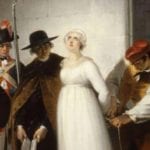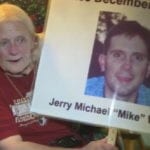 History
History  History
History  Pop Culture
Pop Culture 10 Cases of Grabbing Defeat from the Jaws of Victory
 History
History 10 Common Misconceptions About the Renaissance
 Weird Stuff
Weird Stuff 10 Crazy Things Resulting from Hidden Contract Provisions
 Facts
Facts 10 Unusual Facts About Calories
 Weird Stuff
Weird Stuff 10 Days of Humiliation When the Person Should Have Stayed in Bed
 Humans
Humans 10 Surprising Ways Game Theory Rules Your Daily Life
 Food
Food 10 Popular (and Weird) Ancient Foods
 Animals
Animals Ten Bizarre Creatures from Beneath the Waves
 Technology
Technology 10 Unexpected Things Scientists Made Using DNA
 History
History 10 Events That Unexpectedly Changed American Life
 Pop Culture
Pop Culture 10 Cases of Grabbing Defeat from the Jaws of Victory
 History
History 10 Common Misconceptions About the Renaissance
Who's Behind Listverse?

Jamie Frater
Head Editor
Jamie founded Listverse due to an insatiable desire to share fascinating, obscure, and bizarre facts. He has been a guest speaker on numerous national radio and television stations and is a five time published author.
More About Us Weird Stuff
Weird Stuff 10 Crazy Things Resulting from Hidden Contract Provisions
 Facts
Facts 10 Unusual Facts About Calories
 Weird Stuff
Weird Stuff 10 Days of Humiliation When the Person Should Have Stayed in Bed
 Humans
Humans 10 Surprising Ways Game Theory Rules Your Daily Life
 Food
Food 10 Popular (and Weird) Ancient Foods
 Animals
Animals Ten Bizarre Creatures from Beneath the Waves
 Technology
Technology 10 Unexpected Things Scientists Made Using DNA
10 Real Victims Of The CIA’s MK-ULTRA Program
MK-Ultra is one of the most famous undertakings relating to the CIA’s efforts toward mass mind control. There were many different tests conducted as a part of the project, including some conducted on volunteers, inmates, and unsuspecting targets. The project involved several different drugs—most famously LSD—and the participants involved had very different reactions to the testing, with some being inspired by it and others becoming terrified of just the notion of any possible future exposure.
Some fatalities even stemmed from Project MK-Ultra, and what follows are 10 of the most interesting figures to have involvement with this CIA-sponsored testing. This is MK-Ultra and its real victims.
SEE ALSO: 10 Conspiracy Theories About MK-ULTRA You May Not Know
10. Ken Kesey
Kesey, the author of One Flew Over the Cuckoo’s Nest and a source of inspiration in the counterculture movement, was first exposed to LSD and other psychedelic drugs as a part of the MKUltra project while still a graduate student at Stanford University. He came to be involved in the study almost by accident, as a neighbor of Kesey’s—a psychologist—signed up for the project but had to back out at the last minute. An outstanding athlete and a straitlaced individual up to that point, Kesey had never done any sort of drug and had never even tasted alcohol. At the time of the experiments, Kesey was in training for the 1960 Olympics, as he had earned a place on the wrestling team as an alternate.
Despite Allen Ginsberg’s insistence, Kesey did not believe that the project was sponsored by the CIA, and not until decades later did Kesey discover the program’s true intent: “[The testing] wasn’t being done to try to cure insane people, which is what we thought. It was being done to try to make people insane—to weaken people, and to be able to put them under the control of interrogators.”
Of course, the resulting effect of the LSD did not weaken Kesey, as psychedelics came to be a tool of enlightenment for the author and cultural icon. Kesey noted that the CIA experimentation helped in evoking the kind of epiphanies that ultimately served as the foundation for the counterculture movement that would soon follow.
“We suddenly realized that there’s a lot more to this world than we previously thought,” Kesey recalled. “One of the things that I think came out of it is this, is that there’s room. We don’t all have to be the same. We don’t have to have Baptists coast to coast. We can throw in some Buddhists and some Christians, and people who are just thinking these totally strange thoughts about the Irish leprechauns—that there is room, spiritually, for everybody in this universe.”
While still undergoing the CIA testing, Kesey took a job at the project facility, noting that his status as an employee gave him access to several experimental drugs. While Kesey’s friends and many others were able to make LSD on their own after the testing, Kesey acknowledged that the government had the best LSD around, saying, “[The homemade LSD] never was anywhere as good as that good government stuff. That’s the government—the CIA always has the best stuff.”
9. Whitey Bulger
An infamous gangster who evaded capture for decades before finally being arrested in 2011, Bulger was exposed to LSD testing while in a federal prison in Atlanta in exchange for a lighter sentence. For 18 months, Bulger and other inmates were subjected to drug testing, which Bulger described in his notebook as “horrible LSD experiences followed by thoughts of suicide and deep depression.” He was so deeply and negatively affected by the project that Bulger compared the program’s doctor to Josef Mengele, the Nazi doctor responsible for the horrific human experimentation conducted at concentration camps.
Bulger’s anxiety was compounded by his inability to ask for help or disclose what he was experiencing, as he feared that telling anyone of his visual and auditory hallucinations would lead to lifelong commitment in an insane asylum. The effects of the LSD on Bulger were such that the mobster reflected on the irony of his situation in his notebook, writing, “I was in prison for committing a crime and feel they committed a worse crime on me.”
The gangster was apparently so enraged after learning of the program’s intent and the effects it had on other that he strongly considered tracking down Dr. Carl Pfeiffer, the pharmacologist who oversaw the program, with the goal of assassination.
8. Robert Hunter
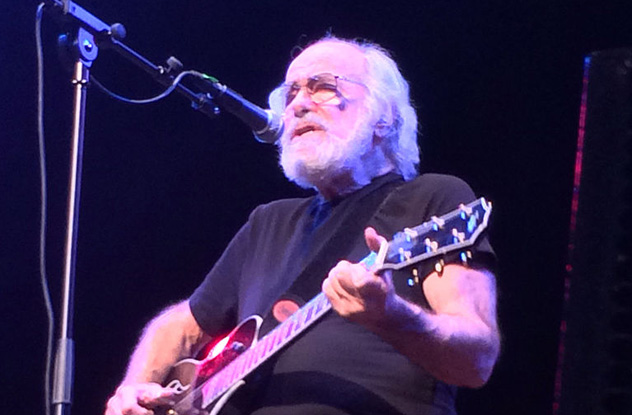
Robert Hunter, a lyricist and longtime collaborator with the Grateful Dead’s Jerry Garcia, was exposed to the same testing as Kesey, though he had no idea that it was a part of the MK-Ultra project until many years later. Hunter had a very different experience from Bulger, saying the following in an interview with Reuters in 2013:
“I couldn’t figure out why they were paying me to take these psychedelics. What they wanted to do was to check if I was more hypnotizable when I was on them. It was hard to pay attention to what the hell they were talking about, much less be hypnotized. It was the first time I had had any of this stuff, and the drugs in themselves were rather spectacular. Nobody had had my experiences, and it was at least two years before those drugs started getting out on the street. It was like a secret club of one.”
As a songwriter, Hunter is responsible for some of the most cherished songs in the Dead’s expansive catalog, including “Ripple,” “Uncle John’s Band,” “Dark Star,” and “Box of Rain,” and his talents were honored in the summer of 2015 when he is scheduled for enshrinement into the Songwriters Hall of Fame, joining the likes of Bob Dylan and Woody Guthrie. Through the CIA testing, Hunter was the first of his social circle to try LSD by a few years, so when Garcia took LSD for the first time, it was Hunter who advised him, “Go home, put on a Ravi Shankar record, just listen to the music.”
7. Harold Blauer
Harold Blauer was a professional tennis player who competed against the likes of Bill Tilden, widely considered one of the greatest tennis players of all time. Following a bout with depression that was at least partially caused by his recent divorce, Blauer checked himself into the New York State Psychiatric Institute, where he was diagnosed as a “pseudo-neurotic schizophrenic.” He checked in during early December 1952, and he would be dead just over a month later.
Though he was improving and was scheduled for release from the institute, doctors began “treating” Blauer with a series of injections that, as it turned out, were a derivative of mescaline. These injections were administered though some of the doctors had no idea what they were injecting, with Dr. James Cattell later telling investigators, “We didn’t know whether it was dog piss or what it was we were giving him.”
Dr. Cattell was acting on a classified agreement between the institute and the Army Chemical Corps to test various chemicals for potential use in warfare, and one of the injections given to Blauer ultimately killed him. There was an extensive cover-up, and not until 1975 did the government finally admit to Blauer’s family that it had injected him with the mescaline derivative that caused his death. In 1987, the family sued the government for its involvement and the subsequent cover-up, winning a $700,000 judgment.
While Blauer was tested as part of an agreement made with the Army Chemical Corps, the principal researcher at the New York State Psychiatric Institute was Dr. Paul Hoch, a CIA consultant on the MK-Ultra project. Though the Army technically funded the experimentation conducted by the institute, Blauer’s death is often considered one of the casualties of MK-Ultra due to the involvement of Dr. Hoch, a driving force behind the project who eventually rose to the position of commissioner of mental hygiene for the state of New York.
6. James Stanley
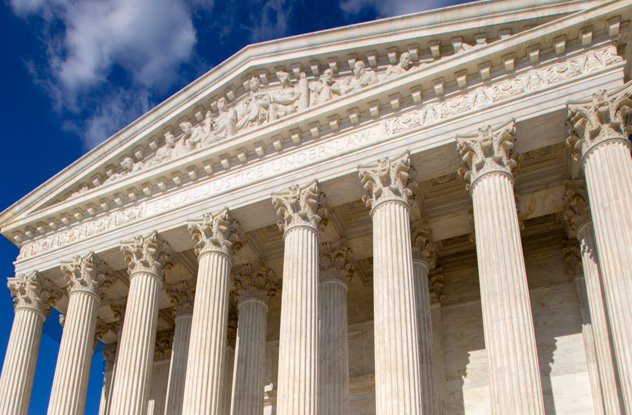
James Stanley seemed to have a very promising military career in front of him before he volunteered for an experiment that involved testing gas masks and protective clothing. He enlisted at the age of 15 and became a master sergeant at just 20 years old, making him one of the youngest in the military to hold such a rank.
His career took a turn after he volunteered to test the gas masks, and Stanley claims that his rapid decline was the result of being exposed to LSD that had been put in the subjects’ drinking water. He did not learn that he was exposed to LSD until 1975, when the Army followed up the experiment by contacting him. He then realized that his odd behavior and feelings of confusion were the result of chemical testing that he had not agreed to.
He sued the Army for the testing but initially lost his case for troubling reasons. According to the Supreme Court, it didn’t matter whether his allegations were true. He lacked standing to sue because military personnel can’t sue the government or their superiors for damages, no matter how severe or even unconstitutional they may be.
This rationale irked Supreme Court Justice William J. Brennan greatly, and his dissent ultimately led Congress to pass a bill ensuring that Stanley could be compensated. In 1996, 18 years after he initially filed suit and nine years after the Supreme Court’s ruling, Stanley was finally awarded $400,577, the maximum amount allowed under the Congressional bill.
SEE ALSO: 10 Intriguing Mysteries Involving The CIA’s Dark Deeds
5. Wayne Ritchie
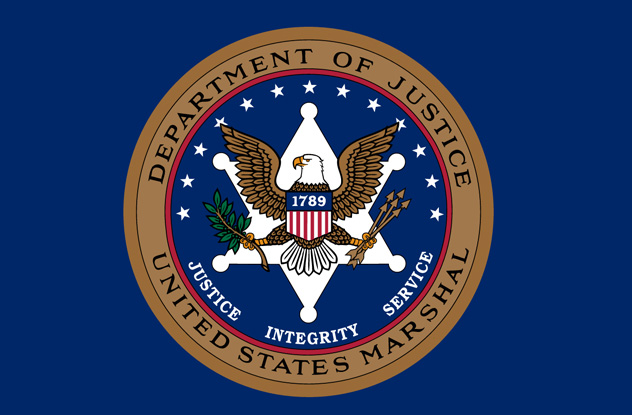
A deputy US marshal and a veteran of the Marine Corps, Wayne Ritchie claims that he was unknowingly dosed while at a holiday party with other federal officers in December 1957. In a sworn deposition given as part of the lawsuit Ritchie later filed, Ira Feldman, a CIA agent involved in the MK-Ultra program, explained the manner in which he observed the unknowing citizens he had drugged with LSD: “You just sit back away and let them worry, like this nitwit, Ritchie,” he said, before going on to acknowledge that Ritchie’s dosage was “a full head” and that Ritchie was targeted because he “deserved to suffer.”
The evening he was exposed to LSD, Ritchie began to act erratically and felt an overwhelming sense of anxiety and worthlessness. After having an argument with his girlfriend in which she said she wanted to move away from San Francisco, Ritchie armed himself with his government-issued service revolvers and tried to get the money for a plane ticket by robbing a bar in the Fillmore District. During the robbery attempt, someone at the bar knocked Ritchie out, and by the time he regained consciousness, police officers were already there to arrest him.
Though he pleaded guilty to attempted armed robbery, Ritchie was sentenced to just five years of probation and a fine of $500. He was also forced to resign from the US Marshals, and he went on to paint houses as his primary source of income. More than 40 years after the incident, Ritchie learned of the CIA’s program and that it had tested LSD and other drugs on unwitting citizens in the San Francisco area. He filed suit, and while it was dismissed, the court acknowledged that it was “quite possible” that Ritchie was drugged by the CIA, but his behavior was more likely the result of “some undiagnosed organic condition” that was probably exacerbated by his consumption of alcohol.
As for the seemingly damning testimony of Feldman, the court held that Ritchie’s lawyer should have worked to elicit a more precise response, noting in its ruling, “Although Feldman made several comments in his depositions suggesting that he was involved in drugging Ritchie, the district court’s determination that Ritchie did not prove Feldman’s involvement is not clearly erroneous. Feldman may have been lying to provoke defense counsel, trying to be funny, or simply speaking imprecisely when he made the purported admissions. Ritchie’s lawyer asked no follow-up questions that might have elicited more detail about Feldman’s vague assertions.”
4. Ruth Kelley
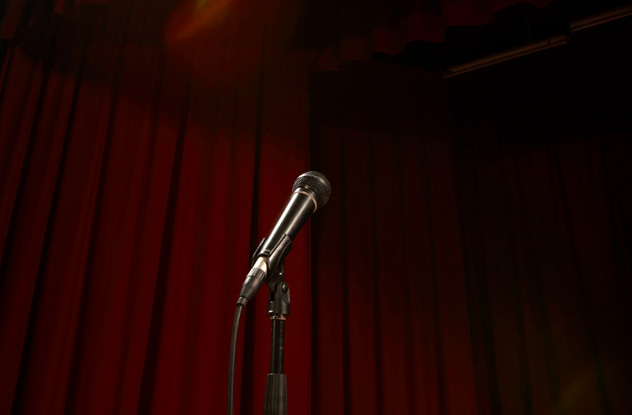
A singer and a waitress at a San Francisco bar, Ruth Kelley was unknowingly given LSD before performing on stage. George H. White, a veteran of the US Bureau of Narcotics who headed up a part of the MK-Ultra program called Operation Midnight Climax, found Kelley attractive but resistant to his advances, so either he or one of his men dosed her with LSD before her performance.
According to a deposition by a CIA investigator, “The LSD definitely took some effect during her act.” She was able to finish her set but rushed off to the hospital immediately afterward. Kelley was released when the effects of the LSD eventually wore off.
Liz Evans, a San Francisco prostitute who worked with White as a part of Operation Climax, corroborated the story, saying that White drugged “a really pretty, blond-haired waitress at the Black Sheep Bar. Her name was Ruth, and George wanted her to take part in things, but she had no interest.”
Those things Evans referred to included the use of prostitutes to lure johns into a CIA safe house on Telegraph Hill in San Francisco. Once there, the prostitutes dosed their clients, while CIA agents observed the effects of the drug through a two-way mirror. The house was recently renovated, and construction crews found microphones hidden in the walls and other recording equipment that had been disguised as electrical outlets.
3. Dr. Robert Hyde
Though Dr. Albert Hoffman first discovered LSD in 1943, it did not arrive in the United States from Switzerland until 1949. It was at this time that Robert Hyde, one of the top psychiatrists at Boston Psychopathic Hospital, was convinced to become perhaps the first American subjected to LSD testing. This was after a visit from Otto Kauders, a Viennese doctor who had lectured on LSD’s use at inducing psychosis. After meeting with Kauders, the doctors at Boston Psychopathic believed that if LSD could indeed induce a psychosis similar to schizophrenia, there was a strong possibility of finding an antidote to the condition as well.
Hyde’s experience with LSD did not yield much in the way of clear psychosis, but the doctors at the hospital noticed that their colleague was acting strangely after taking 100 micrograms of the substance. During his rounds, he became “quite paranoiac, saying that we had not given him anything. He also berated us and said the company had cheated us, given us plain water. That was not Dr. Hyde’s normal behavior; he is a very pleasant man.”
While Hyde’s LSD encounter was hardly of note aside from his possible status as the first test subject, the doctor ultimately went on to accept government funding through the CIA to test LSD on patients. Whether Dr. Hyde was aware of the CIA’s intent with regard to the testing is a matter for debate, but he was receiving annual funds of $40,000 to test the effects of LSD on patients at the various facilities with which he was associated.
2. Technical Services Staff (TSS) Agents
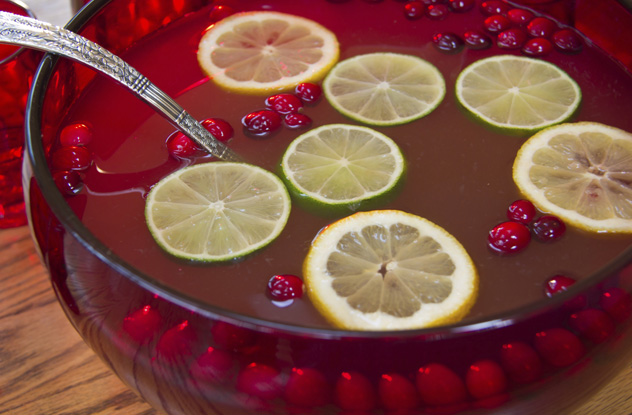
The CIA had multiple units working on MK-Ultra-related testing, including the Office of Security and the Technical Services Staff (TSS). These units worked under the direction of Dr. Sidney Gottlieb, the chemist who approved clandestine LSD testing on unwitting citizens. Gottlieb was interested in the effects of LSD as it related to interrogation, but he also believed that dosing public figures without their knowledge could serve several purposes, including discrediting someone in a position of power by making them appear foolish in a very public setting.
Before subjecting the public to these tests, TSS agents first tested LSD in-house, experimenting on themselves in controlled settings to observe the effects of the drug. Gottlieb recognized, however, that a controlled setting was not the same as a public setting, so he allowed agents in the TSS to begin dosing each other at the office. The targeted agent would have no prior knowledge, though they would be informed after the dose had been successfully administered so agents could prepare for the effects that were about to set in.
This sort of testing quickly expanded. Other agents at the CIA were dosed by their fellow agents, and the surreptitious dosing was ultimately considered an occupational hazard among operatives. Security personnel became concerned that agents in TSS were becoming unhinged due to their frequent LSD use, and matters came to a head when a plot to spike the punch bowl at the annual CIA Christmas party was revealed. In a memo, officials made it clear that LSD could very well “produce serious insanity for periods of 8 to 18 hours and possibly for longer” and that CIA officials strongly opposed any sort of LSD “testing in the Christmas punch bowls usually present at the Christmas office parties.”
1. George H. White

The TSS agents were not the only CIA operatives to get carried away with the use of LSD, as George H. White, the aforementioned head of Operation Midnight Climax and an agent with the US Bureau of Narcotics, did far more than just experiment with the LSD and other drugs he had at his disposal. Though White was a “real hard head” whose subordinates “were pretty much afraid to do anything without his full approval,” White got pretty loose during his time operating the CIA safe house in San Francisco.
Neighbors frequently complained about the activities that were going on at the safe house, as there were frequent scenes in which “men with guns in shoulder straps [were] chasing after women in various states of undress.” White acknowledged that his use of LSD had an effect on his ability to conduct himself in a professional manner, saying, ” ‘clear thinking’ was nonexistent while under the influence of any of these drugs. I did feel at times like I was having a ‘mind-expanding experience,’ but this vanished like a dream immediately after the session.”
White later made his appalling intentions clear with regard to Operation Midnight Climax and his other professional pursuits in a letter to Dr. Sidney Gottlieb, saying, “I was a very minor missionary, actually a heretic, but I toiled wholeheartedly in the vineyards because it was fun, fun, fun. Where else could a red-blooded American boy lie, kill, cheat, steal, rape, and pillage with the sanction and blessing of the All-Highest?”
SEE ALSO: 10 Secret CIA Prisons You Do Not Want To Visit
J. Francis Wolfe is a freelance writer and a noted dreamer of dreams. When he’s not writing, he is most likely waiting for “just one more wave,” or quietly reading under a shady tree.
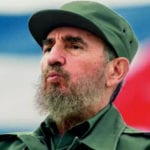
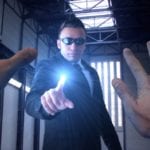
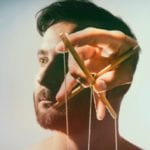


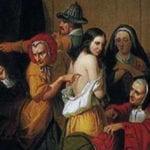
![10 Creepiest Photos Of Victims Taken By Serial Killers [DISTURBING] 10 Creepiest Photos Of Victims Taken By Serial Killers [DISTURBING]](https://listverse.com/wp-content/uploads/2018/09/Regina-Kay-Walters-featured-2-150x150.jpg)
